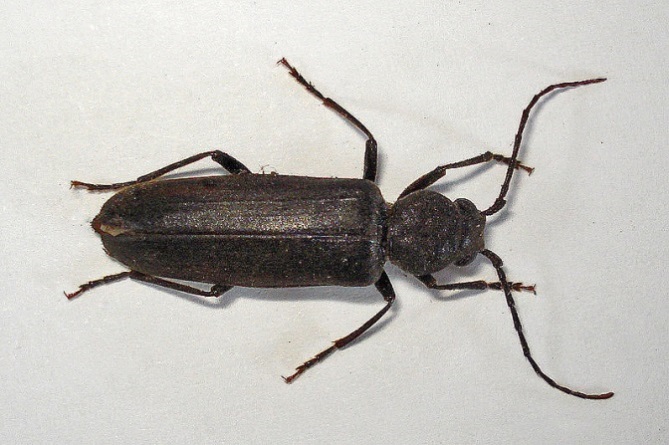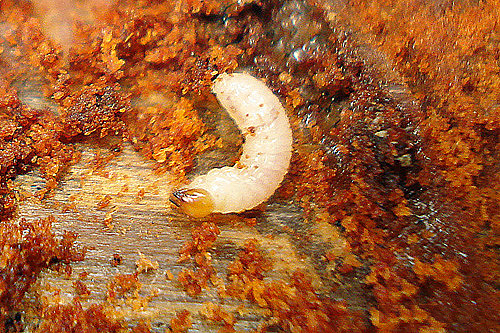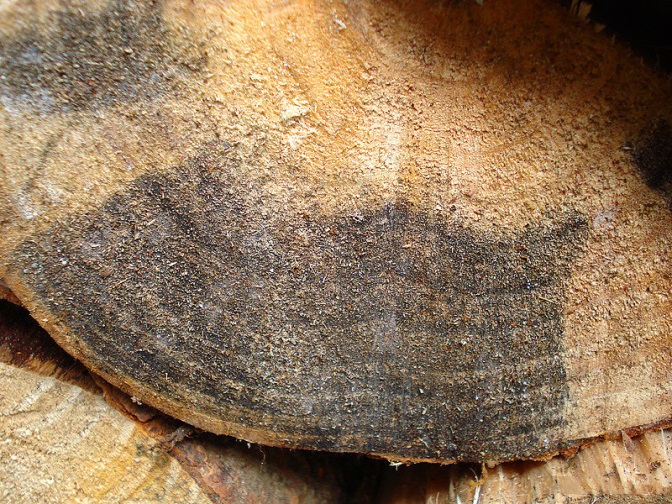
Burnt pine longhorn beetle
| Primefact number | Edition | Published | Author |
|---|---|---|---|
| 1414 | First | Jun 2015 | Plant Biosecurity and Product Integrity |



Burnt pine longhorn beetle (Arhopalus ferus) is an exotic plant pest not present in Australia. This insect pest is a serious threat to Australia’s forest products industry.
Burnt pine longhorn beetle, also known as burnt pine longicorn, is a pest of plantation forestry, particularly pine (Pinus spp.).
Adult burnt pine longhorn beetles (Figure 1) are attracted to bright lights and seek shelter in dark secluded areas during daylight. This behaviour often leads to them becoming hitchhikers on imported cargo or vessels.
The flight season of burnt pine longhorn beetle extends from November to April/May. During this period, adult beetles are often intercepted at the Australian border on ships from New Zealand.
Notifiable status
If you suspect Burnt pine longhorn beetle (Arhopalus ferus):
- Call the Exotic Plant Pest Hotline 1800 084 881
- Email biosecurity@dpi.nsw.gov.au with a clear photo and your contact details
- Report online: online form
Damage
Larvae of burnt pine longhorn beetle feed under the bark of infested trees, boring trails in the timber up to 10 cm deep. Larval tunnels usually run parallel with the timber grain and contain compacted red-brown frass (Figure 2).
Adult burnt pine longhorn beetles vector fungi that cause discolouration of the internal timber. Discolouration, known as sapstain (Figure 3), impacts the quality and marketability of timber.
Burnt pine longhorn beetles are primarily found in burnt or dead trees. After fire, burnt trees can be attacked within 24 hours and so the time available to salvage timber is greatly reduced.
Living trees not affected by fire can support lighter populations and experience less damage.
Description
Burnt pine longhorn beetle is very similar in appearance to closely related Australian species. To avoid species confusion, correct identification should be carried out by a technical expert.
Adults
Adult burnt pine longhorn beetles are 12–30 mm long and reddish brown to black in colour. Four parallel ridges run the length of the wing cases. The antennae are half to three-quarters the length of the body (Figure 1).
Immature stages
Eggs are white, cylindrical and less than 2 mm.
Larvae (Figure 2) are about 25 mm long, white and slightly flattened in shape. Larvae have a pair of black projections at the rear of the body.
Lifecycle
Female burnt pine longhorn beetles lay up to 1000 eggs. Eggs are laid in groups of 5 to 50 in bark crevices of logs and burnt or killed trees.
Larvae hatch after 10 days and bore into the tree to feed. Larvae will bore up to 10 cm deep when population pressure is high.
Fully grown larvae prepare pupal chambers with exit holes in the surface of the bark. The exit holes are plugged with coarse strands of wood just before the larvae retreat to pupate.
Adults emerge from November to March and live for several weeks. The life cycle is usually completed in one year, but can take up to two.
Host range
The main host of burnt pine longhorn beetle is pine trees (Pinus spp.). Less common hosts include common spruce (Picea abies), Douglas fir (Pseudotsuga menziesii) and larch (Larix decidua).
Spread
Burnt pine longhorn beetle can be spread long distances as adults or larvae in imported raw or processed wood or on machinery.
Commodities that may carry burnt pine longhorn beetle include raw logs and timber, bark, wood chips, plywood, manufactured wood products and wooden packaging materials.
Burnt pine longhorn beetles can fly more than 3 km in search of new hosts. Flight occurs from dusk to midnight.
During the flight season additional biosecurity surveillance and import requirements are applied at the Australian border to vessels and commodities considered to be high risk.
Distribution
Burnt pine longhorn beetle is native to most parts of Europe, Asia and Africa. Burnt pine longhorn beetle has become established in New Zealand.
Actions to minimise risk
Put in place biosecurity best practice actions to prevent entry, establishment and spread of pests and diseases:
- keep forests and timber stockyards free of potential breeding sites such as reject logs and dead trees, especially if fire damaged
- be on the lookout for beetle activity at dusk
- practice “Come clean, Go clean”
- ensure all staff and visitors are instructed in and adhere to business management hygiene requirements
- keep records

